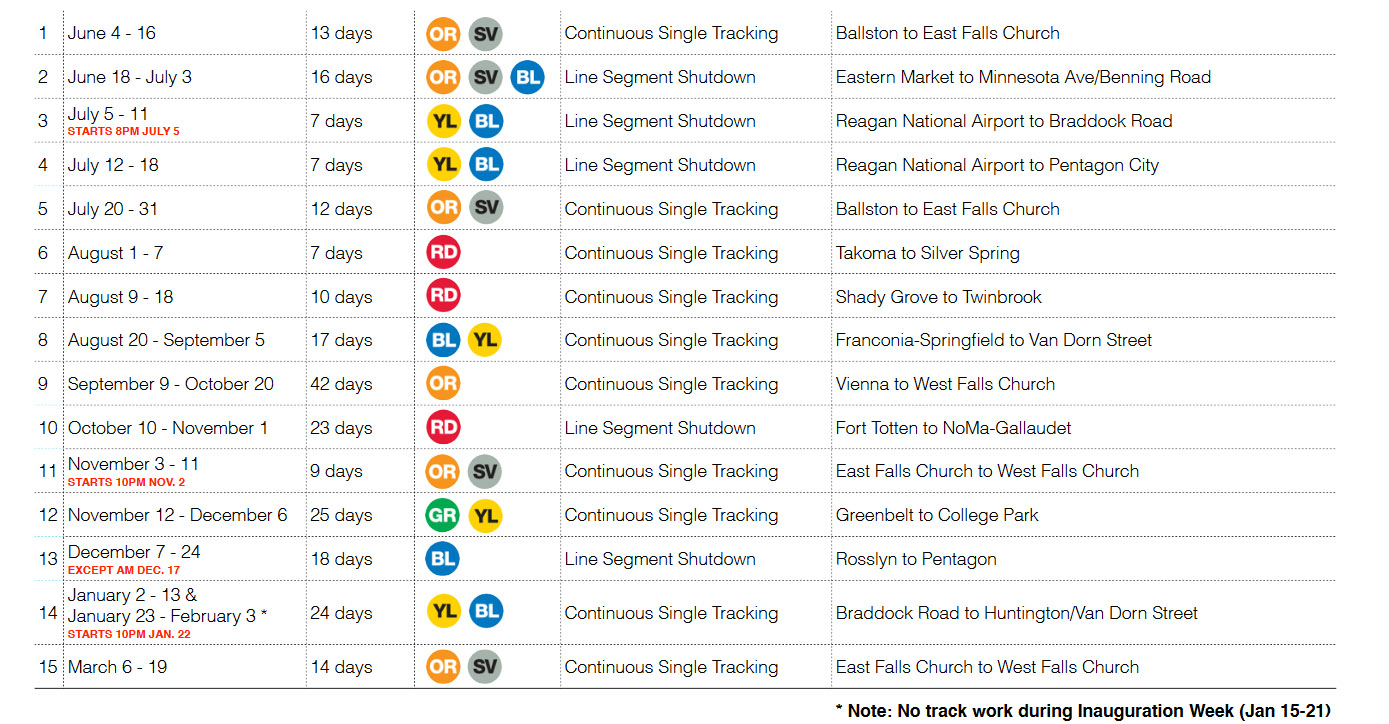WASHINGTON — Metrorail riders are being urged to start looking for alternative transportation options before a year of intensive and disruptive track work begins in June.
Metro released its revised schedule for a yearlong track rehabilitation plan Thursday after the Federal Transit Administration said the original plan required safety-related changes.
“Riders may have to avoid Metro altogether … because of the reduced service,” said Metro General Manager Paul Wiedefeld during a conference call not related to the repair schedule announcement.
The track repairs will reduce service or eliminate service along stretches of the system for weeks at a time in order to quickly fix and update key parts of the Metrorail system including the tracks, drainage, electrical components and even the rail ties. Riders can expect service disruptions during the rush hour and at night. There will be no more late night service on weekends.
The new plan addresses the FTA’s concern that some of the most critical areas were not going to be addressed immediately. The revised schedule moves up repairs that will significantly reduce service for Orange, Silver and Blue line riders.
Repairs between Ballston and East Falls Church will require trains to share a single track and are set to last from June 4 to 16.
Beginning June 18, the Blue, Orange and Silver lines will have no service between Eastern Market and the Minnesota Avenue and Benning Road stations — the first full track shutdown and another problem spot identified by federal inspectors.
The revised plan, which Metro emphasizes could be added to or changed again, now lists five shutdowns and 10 single-tracking zones that are expected to wrap up by late March. Under the original plan, the work would have extended into next May.

The longest single-tracking zone remains 42 days on the Orange Line between Vienna and West Falls Church from Sept. 9 to Oct. 20.
The longest shutdown will last 23 days on the Red Line between Oct. 10 and Nov. 1 for work between Fort Totten and NoMa-Gallaudet.
Even when riders use stations outside of the work zones, far fewer trains will run on the lines impacted by the repairs.
For example, during the first single-tracking zone, Silver Line service to Tysons Corner and Reston will be cut by 67 percent. Trains to Vienna will be cut by 70 percent. And trains through the Silver, Orange and Blue line shared stations downtown will be cut by 28 percent.
During the shutdown of the tracks between Eastern Market, Minnesota Avenue and Benning Road, train service to Blue, Orange and Silver line stations downtown will be reduced by 54 percent. Trains west of Rosslyn will be cut by 43 percent. And trains to New Carrollton and Largo Town Center will be cut by more than 40 percent.
All of the work is set to take place around the clock. No work is planned for the week of the presidential inauguration. The 15 target areas will be in addition to other, more routine track work, which could reduce service as early as 8 p.m. on week nights and in between rush hours.
Metro plans to provide dedicated bus service between the affected stations in all 15 work zones.
The Office of Personnel Management said that individual agencies will have to decide how best to help federal employees cope with the service reductions.






